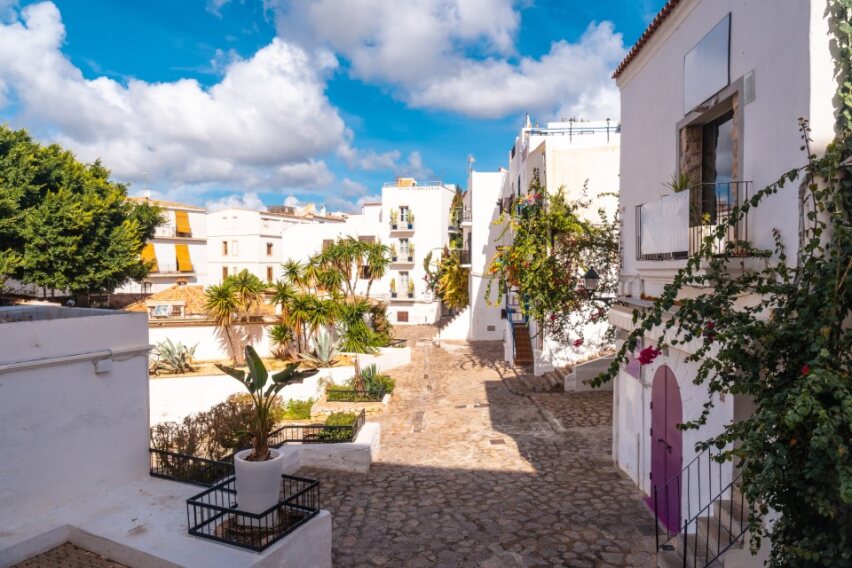
Discover the most festive side of Ibiza! Traditional festivals are a fundamental part of Ibizan culture and one of the best ways to learn about its identity and customs . On the island, you can enjoy celebrations full of music, dance and color , which attract visitors from all over the world. One of the most popular events is the Sant Joan festival , which is celebrated every June 24 in different parts of the island. You can also enjoy the spectacular float parade of the Santa Eulalia festival , which is celebrated in February and is one of the oldest on the island. Another of the best-known festivals in Ibiza is that of the Virgen del Carmen , patron saint of fishermen , which is celebrated in July in the island's ports. It is a very emotional celebration, in which maritime and land processions are carried out in honor of the Virgin .

The arrival of travelers from all over the world and the convergence of diverse cultures on the island have not weakened the roots of Ibizan traditions , but have enriched and revalued them. The Ibizan native proudly clings to his cultural identity and enjoys sharing it with those who visit the island. The centuries-old churches , the old wells and the houses scattered throughout the territory are palpable examples of the popular wisdom and adaptability to the environment that characterize the Ibizan people. If you want to see one of the most beautiful festivals on the island, come to its coastal municipalities. There, on July 16, the picturesque seafaring processions are held , in which everyone who owns a boat or llaüt goes to sea to make an offering to the Virgin of Carmen , the patron saint of sailors , to ensure them a year of good fishing. If you walk through the ports you can see them decorating their ships to celebrate the big day.

One of the most notable hallmarks is the country house , its own architectural model that defies the onslaught of modernity . These buildings, centuries old and whitewashed , give rise to deep-rooted customs such as meetings in the traditional "porxo" or porch , and the use of old oil mills for the production of oil. The country houses , with their cubes of different dimensions, grow with the family and are always oriented towards the sun . In Ibiza, the nickname of the owner of the house often matters more than his surname, and these homes are passed down from generation to generation , trying to maintain their architectural essence with respect and care in the renovations .

Artisans find in Ibiza a refuge to share their wisdom , while popular songs and "ball pagès" , the island's traditional dance, are passed down from generation to generation . This dance, which evokes the Ibiza of ancient times , can be witnessed in church squares or old communal wells , reflecting the firm commitment of Ibizans to their traditions.
The "ball pagès" stands out for its uniqueness and antiquity , with a choreography that recalls circles and figures of the number eight . The costumes , especially those of the women, carefully made and adorned with gold, silver and coral jewelry , are authentic works of art. The dance highlights the prominent role of women and men, as well as the value of Ibizan tradition and culture.
One of the most picturesque cultural manifestations that you can visit in Ibiza and Formentera is its traditional dance. The Ball Pagès encompasses several types of dance with small differences that will show you the peculiarities of each town in Ibiza and Formentera . These variations have in common the style of the steps, the music and the way the dancers dress.

If you look at the steps they take you will be able to taste the archaism that the Ball Pagès gives off. There is a total difference between the movements of men and women: while they perform constant jumps and play large castanets to seduce the woman, she remains hieratic and makes soft movements to be facing or in profile describing curves . The symbolism of these female movements, which represent the phases of the moon , will make you discover the origin of these dances, since the ancient goddess of Ibiza was Tanit, the personification of the Moon.
In the music that accompanies them you can also see the folkloric spirit of this dance . Drum and flute , the espasí (metallic percussion instrument that looks like a sword) and large castanets create a rhythmic ensemble unique in the Mediterranean. Another striking characteristic of the Ball Pagès is the clothing of the dancers . The men are dressed completely in white with a vest with filigree bells , a red scarf and a red barretine . The women's attire is even more colorful: the typical country dress is adorned with a multitude of jewels , dominated by the characteristic undertakeda (multi-strand necklace with filigree decorations) that is completed with a crucifix and a crystal reliquary , as well as multitude of golden rings .

The "ball pagès" shows can be enjoyed in various locations throughout the summer, such as the Baluarte de Sant Pere in Dalt Vila and the Patio de la Iglesia de Sant Miquel . These traditional dances are performed at the town's patron saint festivals and at dances in the communal wells.
Furthermore, during the Christmas and Easter festivities , the well-known "Caramelles de Nadal" and "Caramelles de Pasqua" are celebrated, traditional music concerts that fill the island's churches with joy and harmony.
Join the festivities of Ibiza and experience immersing yourself in the rich culture and traditions of the island!

